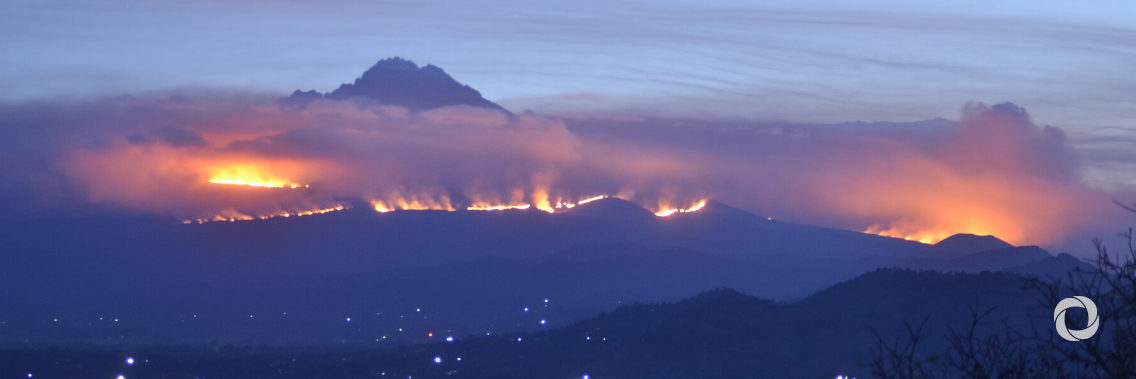As fires swept up the slopes of Mount Kilimanjaro, Africa’s tallest mountain, for the fifth day, hundreds of volunteers from local villages joined firefighters racing to stop a blaze threatening to ravage one of the world’s richest and most diverse ecosystems.
The fires, which first started to burn at a rest stop for climbers, have been raging for five days with dry grass and strong winds hampering efforts to bring the flames under control.
“This devastating fire is cutting through the most prestigious natural space in the whole of Tanzania,” Padili Mikomangwa, an environmentalist based in the port city of Dar es Salaam, said in a telephone interview. “The nation at large is following this seriously and shocked.”
With a summit of 5,895 meters, or 19,341 feet, Mount Kilimanjaro is the highest point in Africa and is considered the highest free-standing volcanic mass in the world. The mountain’s snow-capped peaks and the surrounding national park were declared a UNESCO World Heritage Site in 1987, with endemic plants and dozens of animal species, including endangered ones, calling it home.
In recent years, the mountain and the surrounding ecosystem have faced challenges including water and air pollution, intrusion on the park’s perimeters, illegal logging, and poaching. Climate change has also pushed the mountain’s glaciers and icecaps to thaw.
With thousands of climbers arriving each year, concern has grown in recent years that overtourism threatens the natural splendor of Kilimanjaro.
“The extent of the fire which we see today is at a new level,” Marcell Peters, a senior lecturer at the University of Würzburg in Germany who has studied the ecosystems of Kilimanjaro since 2010, said in an email.
He said that the loss of plant life — particularly Erica and Podocarpus trees — could leave the area more vulnerable to fire in the coming years.
Tanzanian parks officials aid an investigation into the origin of the blaze was underway, but preliminary evidence suggested that it was sparked accidentally by porters warming food for visitors.
In addition to the plants and forests that have been destroyed, the fires have also razed facilities used by tourists at the Horombo Center.
Officials estimate that the fire has so far destroyed an alpine area stretching over roughly two miles.
Original source: New York Times

